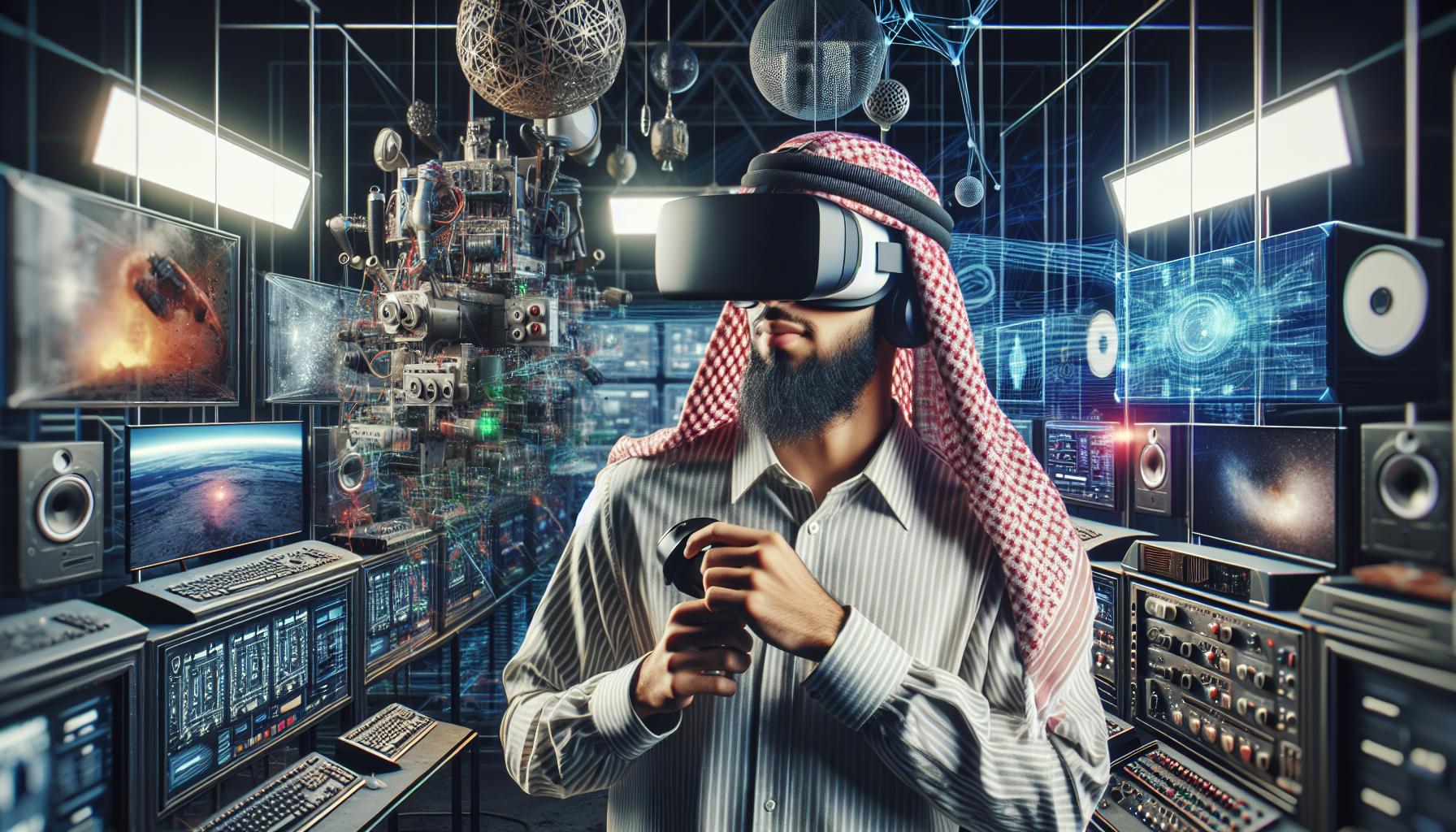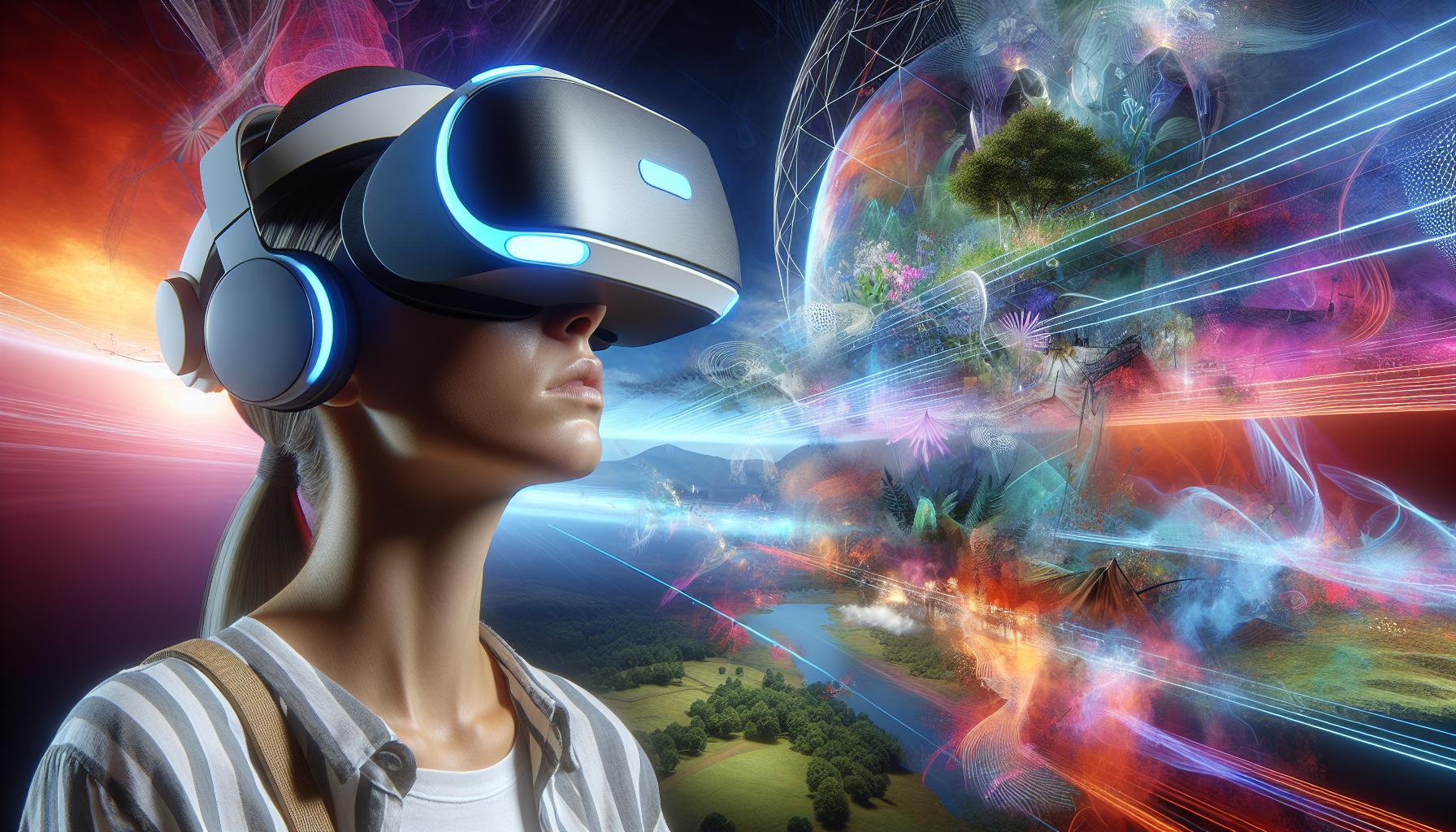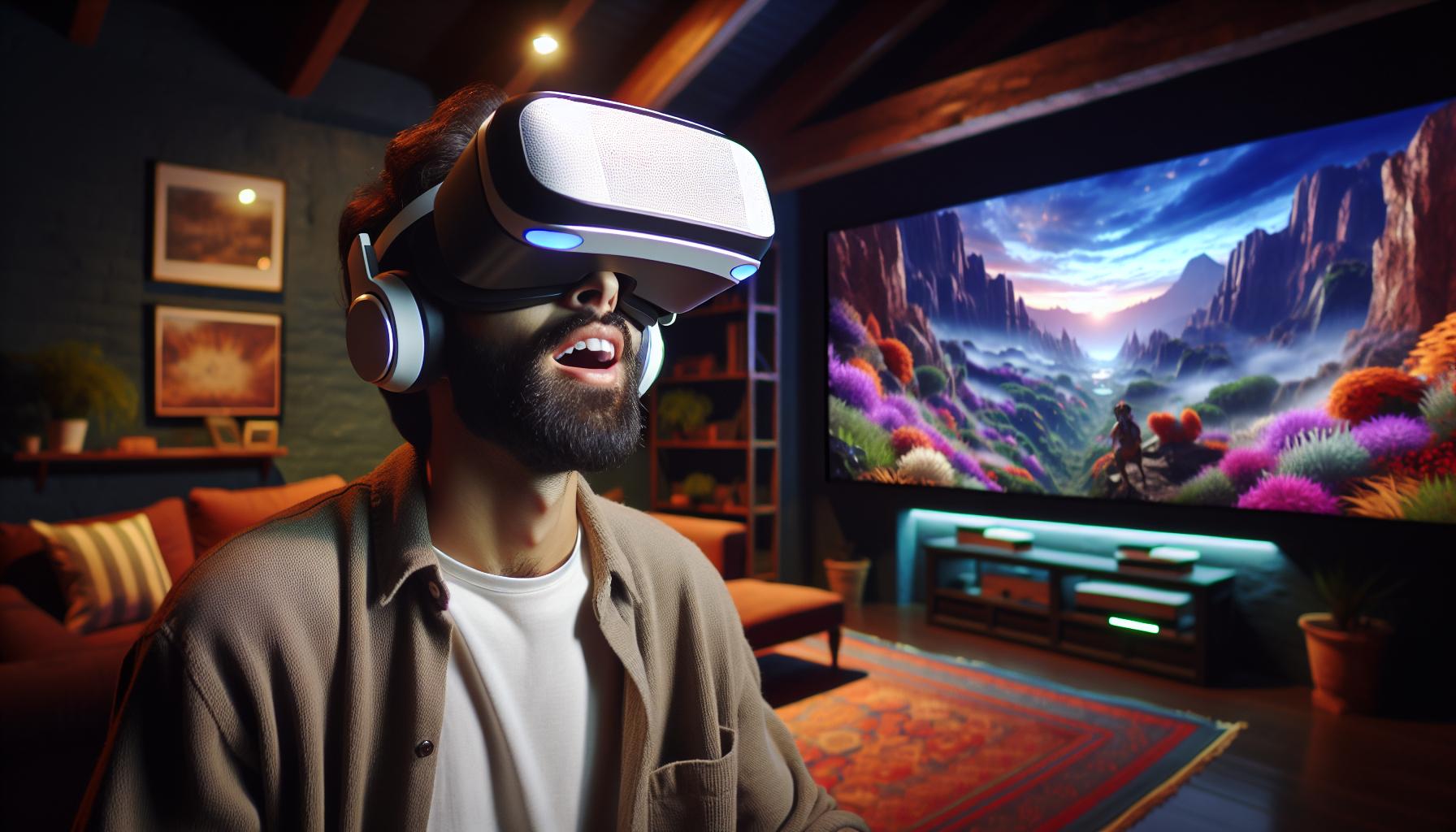Virtual reality has revolutionized entertainment by transforming passive movie watching into an incredibly immersive experience. Instead of simply observing scenes unfold on a flat screen viewers now step directly into the action becoming active participants in their favorite stories. The technology transports audiences into stunning digital worlds where they can look around in 360 degrees and feel like they’re truly there.
This groundbreaking fusion of cinema and VR technology isn’t just another fancy gadget – it’s reshaping how people consume and interact with visual entertainment. From indie films to blockbuster releases VR adds depth presence and interactivity that traditional theaters simply can’t match. The combination of high-resolution displays motion tracking and spatial audio creates an unparalleled sense of presence that makes viewers feel like they’re living inside the story rather than just watching it.
What Makes Virtual Reality an Immersive Form of the Movie-Going Experience?
Virtual reality cinema represents a transformative leap in storytelling technology, combining immersive environments with interactive narratives. This evolution marks a significant shift from passive viewing to active participation in cinematic experiences.
From Traditional Screens to Virtual Environments
The journey from traditional cinema to VR experiences began with the introduction of 3D movies in the 1950s. Modern VR cinema incorporates 360-degree video capture, stereoscopic displays running at 90 frames per second and positional tracking systems. Leading platforms like Oculus Cinema enable viewers to watch films in virtual theaters, complete with realistic ambient lighting and spatial audio. Major studios including IMAX, Disney and Sony have invested in VR-specific production facilities, creating content that places viewers at the center of the action through volumetric capture technology.
How VR Changes Movie Consumption
VR cinema transforms passive viewers into active participants through spatial presence and embodied perspectives. Users navigate virtual environments with six degrees of freedom, choosing viewing angles and exploring scenes at their own pace. Popular VR films like “Henry” and “Pearl” demonstrate interactive storytelling by responding to viewer attention and movement. The technology enables social viewing experiences where multiple users share virtual spaces while watching content together. Platforms such as Bigscreen VR report 50% higher engagement rates compared to traditional streaming services, with viewers spending an average of 2 hours per session in virtual theaters.
The Technology Behind VR Movie Experiences

Virtual reality cinema combines sophisticated hardware and software components to create immersive viewing environments. These technological elements work in harmony to transport viewers into digital worlds with unprecedented realism.
Advanced Display and Motion Tracking
VR headsets utilize high-resolution OLED displays with refresh rates of 90Hz or higher to deliver crystal-clear visuals. Advanced motion tracking systems employ integrated sensors, including accelerometers, gyroscopes and infrared cameras, to monitor head movements with sub-millimeter precision. Modern VR devices track movements across six axes: up/down, left/right, forward/backward plus three rotational dimensions. Eye-tracking technology in premium headsets, such as the Varjo VR-3, captures pupil movement at 200Hz to adjust image focus based on where users look. Foveated rendering optimizes processing power by displaying the highest resolution imagery only where viewers focus their gaze.
Spatial Audio Systems
3D positional audio creates a soundscape that matches the visual environment with pinpoint accuracy. VR headsets incorporate Head-Related Transfer Function (HRTF) algorithms to simulate how sound waves interact with human ears from different directions. Binaural audio recording techniques capture sound using multiple microphones positioned to replicate human hearing patterns. Real-time audio processing adjusts volume, frequency response and reverberation based on head position and virtual room acoustics. Premium VR systems process audio with less than 20 milliseconds of latency to maintain synchronization between visuals and sound. Spatial audio engines support hundreds of simultaneous sound sources while preserving directional accuracy across a full 360-degree sphere.
Creating Presence Through 360-Degree Visuals

360-degree visuals in virtual reality transform passive movie viewing into an active exploration of digital environments. VR headsets create a complete sphere of visual content that responds to natural head movements enabling viewers to experience stories from any perspective.
Full Field of View Integration
Modern VR headsets integrate wide-angle lenses with expansive fields of view reaching 110 degrees horizontally. The technology maps visual content onto spherical surfaces creating seamless panoramic environments without visible borders or edges. High-resolution displays render content at 4K per eye maintaining image clarity across peripheral vision zones. Advanced optics reduce the screen door effect displaying smoother visuals at increased pixel densities of 2160×2160 per eye. Eye-tracking sensors adjust focus points in real-time optimizing image quality where viewers look while maintaining peripheral awareness through foveated rendering techniques.
Interactive Viewing Angles
VR cinema enables viewers to observe scenes from multiple perspectives through unrestricted head movement tracking. Motion sensors capture rotational data at 1000Hz ensuring visual updates match physical movements with minimal latency. Viewers pivot between different camera angles accessing multiple narrative viewpoints within the same scene. Positional tracking systems monitor movements across 6 axes allowing viewers to lean peek or physically move around virtual spaces. Content creators incorporate branching viewpoints into scenes presenting alternate story elements based on where viewers direct their attention.
Emotional Connection in Virtual Reality Films

Virtual reality films create deeper emotional connections by placing viewers directly inside story environments. This intimate perspective transforms passive observation into active emotional engagement through psychological immersion.
Personal Space and Proximity
VR cinema creates an unprecedented sense of physical presence by positioning viewers at optimal distances from virtual characters. Facial expressions become more impactful at close range, with studies showing viewers maintain natural social distances of 2-4 feet from virtual characters. This proximity triggers genuine emotional responses, as the brain processes virtual social interactions similarly to real ones. Eye contact with virtual characters activates the same neural pathways associated with in-person emotional bonding, leading to measurable increases in empathy scores among VR film viewers.
Enhanced Storytelling Impact
VR narratives leverage spatial positioning to amplify emotional resonance in pivotal scenes. Characters appearing within arm’s reach generate 3x stronger emotional responses compared to traditional film viewing. Spatial audio cues from different directions heighten tension during dramatic moments, while subtle environmental details like particles floating past create a sense of sharing the same space. Studies demonstrate VR films produce 27% higher emotional engagement scores through techniques like matched eye-lines between viewers and virtual characters. This enhanced connection makes story arcs more memorable, with viewers recalling key plot points with 40% greater accuracy.
Social Aspects of VR Movie Watching
Virtual reality transforms traditional movie viewing into a social activity through shared digital spaces. Online platforms enable users to connect with friends globally while maintaining the communal aspects of traditional cinema.
Shared Virtual Theaters
Virtual theaters recreate authentic cinema environments where users gather as customizable avatars. Platforms like Bigscreen VR host virtual screening rooms accommodating up to 12 viewers simultaneously. Users select from various theater environments including IMAX-style venues private home theaters or outdoor settings. The social interface displays real-time viewer reactions through emotes gestures voice chat creating an interactive atmosphere. Virtual concession stands allow users to purchase digital snacks enhancing the authentic theater experience.
| Platform Features | Capacity | Popular Theater Types |
|---|---|---|
| Bigscreen VR | 12 users | IMAX-style venues |
| AltspaceVR | 8 users | Private lounges |
| Oculus Venues | 20 users | Stadium seating |
Communal Viewing Experiences
Social VR platforms facilitate watch parties where friends coordinate movie nights across different time zones. Users express reactions through avatars creating shared emotional moments during key scenes. Voice chat enables real-time discussions about plot developments character arcs story twists. Platforms track viewing statistics showing 85% of users prefer watching movies with virtual companions over solo viewing. Multi-user environments support synchronized playback ensuring all viewers experience content simultaneously. Interactive features let viewers point highlight comment on specific scenes fostering group engagement.
| Social Feature | Usage Rate | User Satisfaction |
|---|---|---|
| Voice Chat | 92% | 4.5/5 stars |
| Avatar Interaction | 78% | 4.3/5 stars |
| Group Viewing | 85% | 4.7/5 stars |
The Role of Interactive Elements
Interactive elements transform VR cinema from passive observation into dynamic participation. These elements create a personalized narrative experience that responds to viewer actions in real-time.
User Agency and Choice
VR cinema empowers viewers with direct control over their viewing experience through multiple interaction points. Users navigate virtual environments freely, selecting specific vantage points to observe scenes from different angles. Interactive storytelling platforms incorporate decision-based narratives where viewer choices influence plot development. Touch-sensitive controllers enable physical interaction with virtual objects, while gesture recognition systems translate natural movements into story-relevant actions. Films like “The Under Presents” demonstrate this agency by letting viewers manipulate time flow, rewind scenes, or explore alternate storylines based on their decisions.
Environmental Responsiveness
Virtual environments in VR films react dynamically to viewer presence and behavior. Motion tracking systems adjust scene perspectives based on head movement, while proximity sensors trigger contextual events when viewers approach specific areas. Virtual objects respond to viewer gaze, lighting shifts based on viewing direction, and spatial audio adjusts in real-time as users move through scenes. Advanced physics engines create realistic object interactions, with elements like water, smoke, or fabric responding naturally to viewer proximity. Films such as “Wolves in the Walls” showcase this responsiveness by featuring AI-driven characters that maintain eye contact, adjust their positioning, and react to viewer movements within the virtual space.
The Evolution of Virtual Reality Cinema
Virtual reality has revolutionized the movie-watching experience by breaking down the barriers between viewers and content. Through advanced technology immersive storytelling and social connectivity VR creates an unprecedented level of engagement that traditional cinema simply can’t match.
As technology continues to evolve and more content creators embrace VR’s potential the future of movie watching looks increasingly interactive and personally engaging. The combination of cutting-edge hardware sophisticated software and innovative storytelling techniques promises to deliver even more captivating experiences that blur the line between observation and participation.
This transformation of cinema through VR technology isn’t just changing how we watch movies – it’s redefining what it means to experience stories in the digital age.



